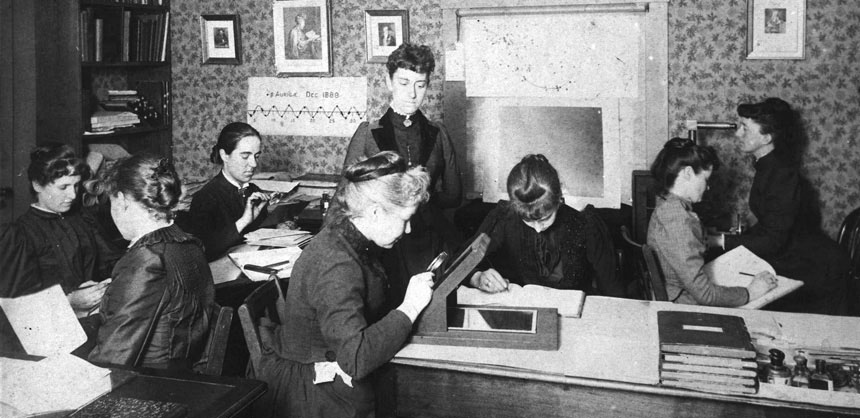
Book Review: The Glass Universe
March 2017 :
The Glass Universe: How the Ladies of the Harvard Observatory took the Measure of the Stars, by Dava Sobel. Viking, New York, 2016, ISBN #978-0-067001-695-2, hardbound, $30.00 U.S.
Many of you are familiar with Dava Sobel's previous books, especially Longitude and Galileo's Daughter, both of which required extensive historical research. This one introduces a part of history that many astronomers use every day, but perhaps aren't aware from where it came: Spectral classification.
It is amazing that this book came out just about the same time as Hidden Figures, the story of the women of color who were very important to the space program; however, in this case, the “computers” were women who opened the universe to the size, brightness, and composition of the stars. Funded mainly by Anna Palmer Draper, and led by Edward Charles Pickering, this incredible team of women, including Williamina Fleming, Annie Jump Cannon, Antonia Maury, Henrietta Leavitt, and many others, were able to dissect an unbelievable amount of information from such tiny glass plates. Open The Glass Universe and you will immediately go back in time with these women, learning their incredible patience, and noting how much they learned from these plates. Their dogged work resulted in much of the structure of the stars, and, in the case of Miss Leavitt, the distances to objects previously believed to be nebulous bodies in our galaxy, changing the concept of the universe itself.
But, this book, in addition to noting the incredible work these women performed, also goes into their lives, showing that their lives weren't just in the “stacks”; Mrs. Fleming began her life in Harvard as a maid, who, fortunately, E. C. Pickering recognized she had more to offer. In the course of her work, she discovered many variable stars and nova; Annie Jump Cannon spent much of her time caring for her older relative, and enjoyed entertaining; Henrietta Leavitt was not in the best of health, but worked as much as she could.
While painstakingly studying these slides, the women of Harvard changed the way astronomers look at, and study, the stars. In The Glass Universe, Sobel gives us a glimpse into the amazing work of just a few dedicated women who, although they believed they were just doing their job, opened the sky to the tremendous discoveries we are still making today.
As an aside, I was recently speaking to an educator who reminded me that students today are not learning script writing in classes, as it is believed to be too ancient a way of communication. As this was the main way of writing for so long, and especially in the time of The Glass Universe, it is possible that, had someone years from now thought of putting together a book on this period, a potential author would be unable to decipher the beautiful, delicate writing of these women. Thank you, Dava Sobel, for the work you've done in preserving this very important part of astronomical history. Everyone reading this will be glad you did.



